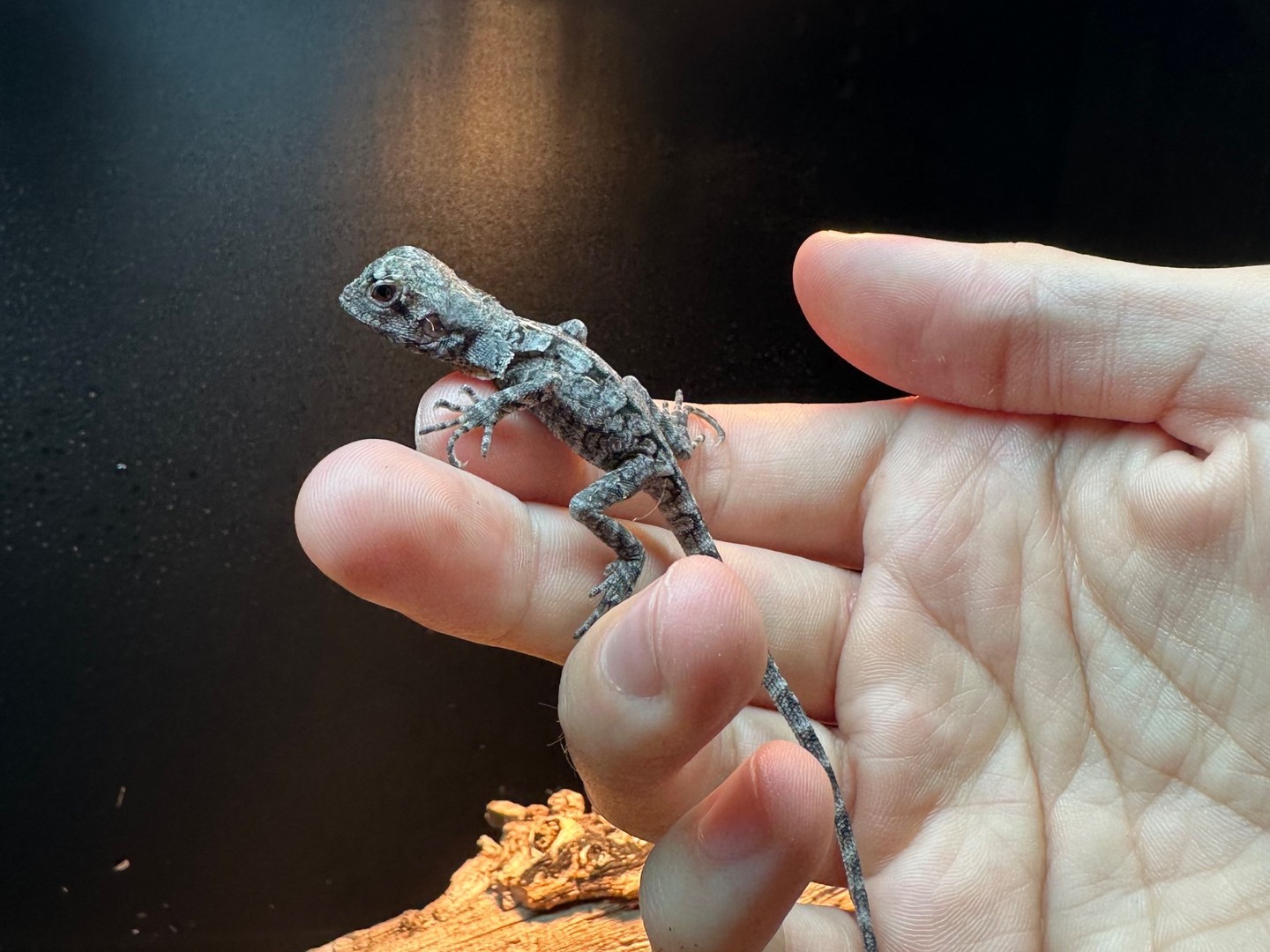Summary:
1. Introduction to the frilled lizard hatchlings.
2. Description of the physical characteristics and unique features of frilled lizards.
3. Information about their natural habitat and distribution.
4. Explanation of the frilled lizard’s behavior and defensive mechanism.
5. Insight into the care and conservation efforts for frilled lizards in zoos.
We have a FRILLING update in honor of our newest additions to the Zoo! Earlier this year, we welcomed six frilled lizard hatchlings in the Tropical Discovery exhibit. These fascinating creatures are named for the large leathery ruff or frill of skin around their necks, which gives them a distinctive appearance. In this blog post, we will explore frilled lizards’ unique and captivating aspects, from their physical characteristics to their behavior and conservation efforts.
Frilled lizards are native to northern Australia and southern New Guinea, where they inhabit forests and woodlands. Despite their small size as hatchlings, they can grow up to an impressive 37 inches in length, making them one of the largest lizards in their native habitat. What truly sets them apart is their frill, which can expand up to 12 inches when fully extended. This frill serves multiple purposes, including thermal regulation and communication with other lizards.
The frilled lizard’s frill is not the only fascinating feature about them. These lizards’ unique coloration helps them blend into their surroundings, making them difficult to spot predators or prey. Their bodies are adorned with intricate patterns and markings, enhancing their camouflage abilities. Their long and slender bodies enable them to easily navigate through their habitat’s dense vegetation.
Regarding behavior, frilled lizards are known for their unique defensive mechanism. When threatened, they open their mouths wide, flare out their frills, and hiss loudly to intimidate their predators. This menacing display, combined with their agility and speed, often deters potential threats. Frilled lizards are primarily arboreal, spending most of their time on trees where their frills serve as a parachute-like structure to help them glide from branch to branch.
Regarding diet, frilled lizards are opportunistic predators, feeding on various invertebrates and small vertebrates. They are capable climbers and leap onto their prey from elevated positions, surprising them with quick movements. Their agility and lightning-fast tongue make them efficient hunters, ensuring they get the nourishment they need to thrive.
Caring for frilled lizards in a zoo requires careful attention to their unique needs. Our Animal Care Specialists provide a habitat that closely mimics their natural environment, with branches for climbing and areas for basking in the sun. A balanced diet, including various insects and small vertebrates, is crucial for their health and well-being.
Zoos play a vital role in conserving frilled lizards and many other species. They participate in breeding programs to ensure genetic diversity and provide educational opportunities for visitors to learn about these incredible creatures. By supporting zoos and their conservation efforts, we contribute to preserving frilled lizards and their natural habitats.
In conclusion, frilled lizards are truly captivating creatures that deserve our attention and admiration. Their physical characteristics, unique defensive mechanisms, and remarkable adaptability make them incredibly fascinating. By providing optimal care in zoos and promoting conservation efforts, we can continue to appreciate and conserve the beauty of frilled lizards for generations to come. So, next time you visit the Zoo, don’t forget to say hi to these little frillers in Tropical Discovery!
*****
Source Description
We have a FRILLING update in honor of Earlier this year, we welcomed six frilled lizard hatchlings in Tropical Discovery. Named for a large leathery ruff or frill of skin around their neck, frilled lizards are found in northern Australia and southern New Guinea. While these little lizards are only a few inches now, they can grow up to 37 inches long, and their frill can reach up to 12 inches when fully extended. Three of these lizards have moved to our Animal Ambassador Team to join our Animal Ambassadors. You may see them around the Zoo soon! In the meantime, say hi to these little ones in this Baby Bulletin, sponsored by @intermountain.
Photo Credit: Animal Care Specialist Troy


